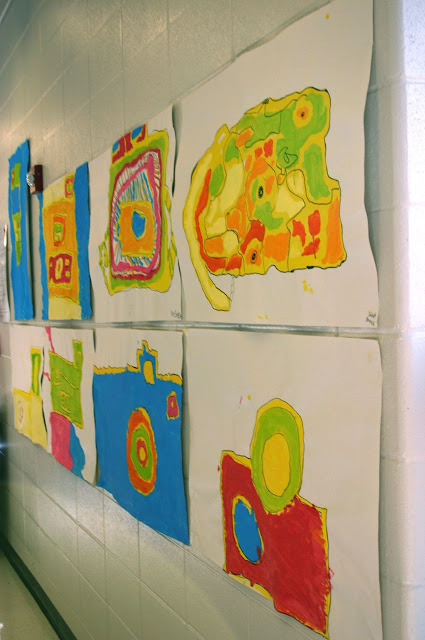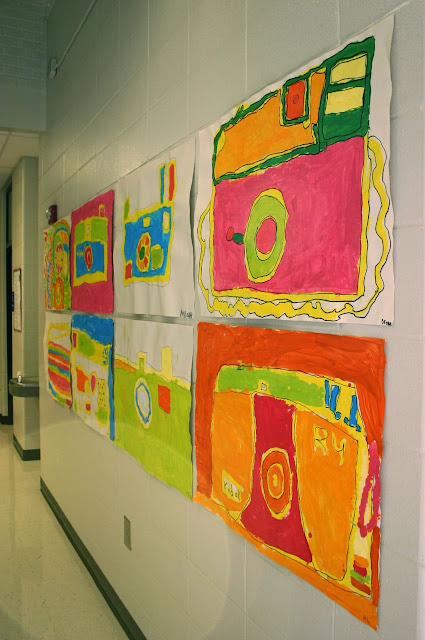Resources to Consider
Book: Greedy Zebra by Mwenye Hadithi, Adrienne Kennaway (this book is part of a series of African stories)
Images of zebras
Intended Grade Level(s): 1st-2nd
Estimated Class Period(s): One and a half
Materials Required: white 12X18 #80 paper --2 sheets, 9X 16 green rectangle, black rectangles for tearing the stripes of the zebra, green tissue paper, black crayons, scissors, glue, black paint and small brushes, green tissue paper, black yarn
Goals and Objectives: The goals of this lesson are technique and procedure based.
GLEs Accomplished In Lesson: 2nd Grade PP 1.B Paint lines with control of the brush, 3.G Create an artwork that communicates ideas about themes: nature
EP 1.A Identify and use wavy lines
1.F Identify and use light and dark values
Procedure (Guided Lesson, Instructions, etc):
Read the book, show images of zebras (I made a poster covered in cool zebra pictures), read the book Greedy Zebra, demonstrate project in steps.
Project (Steps, Examples, etc):
1. I explain that students can make a fat zebra that is busting out of his black coat, or they can make a zebra that looks more like the zebra on the cover of the book. I show them a ‘fat’ one with all the threads busting out on the last page of the book and one that I drew. I actually only demonstrate the first one on the board.
2. I show the zebra drawing step-by-step. Step one, with a black crayon, draw an oval for the body. Step two, draw the neck, head, 4 legs, ears and a tail. I show them that some things need to be colored in solid black (like the ears and the circle for the eye nose,, tip of the tail and maybe the hooves).
3. For the zebra’s stripes, students are to tear a black rectangle into strips. This is hard for some kids, but it is really good for building fine motor skills. They are supposed to tear skinny strips and glue them on the belly, some should start at the top and some at the bottom so they can meet in the middle. Students should also make strips for the neck and legs. If they have trouble, they can go back and add more stripes with a black crayon.
4. I had a painting station set up for students to paint the frames. They were to write their name on the back of a white piece of paper and when I call them to the paint station, they are to paint black stripes on white paper—edges only. This would’ve looked cool w/white paint on black paper, but I have a much larger stock pile of white paper so it made sense to just use black paint. They did this at the same time that everyone else was tearing the strips for the zebra's body.
5. Put everything in the drying wrack and look at books about Africa when finished. (I may have had them start an African mask sketch if they had free time….I had a handout of various African masks available, they were to study it and start planning an African mask on a small sheet of paper.)
Day 2
1. I explained that we would be finishing our Greedy Zebras today. I demonstrated how to cut out the zebra, glue it to the green paper and then add green tissue paper for grass and bushes. I showed them how to roll the tissue paper into a ball or a tube and then glue it down. I also had a little bit of black yarn cut into small pieces for students to add for fur on the end of the tail and the back of the zebra’s neck.
2. The last step was to glue the green paper to the frame. When students finished, they put these in the drying wrack. The second half of this lesson only took about ½ of one hour art time. I also had students add more black lines if their zebras needed more stripes.




















































